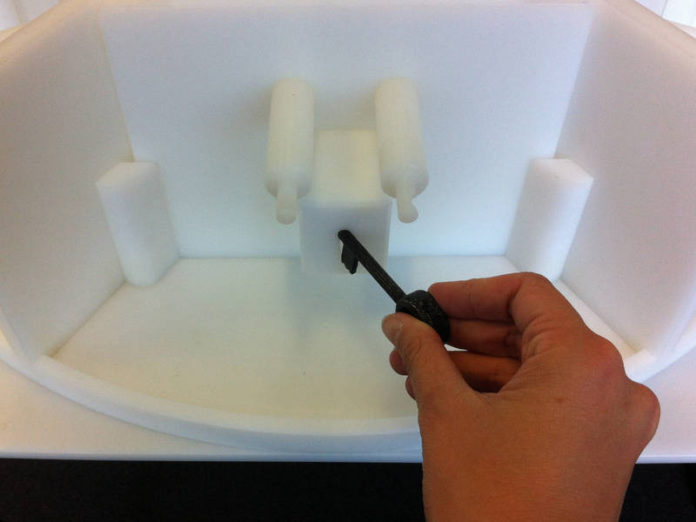
Researchers from Technische Universität München (TUM) and the Klinikum rechts der Isar hospital have analyzed the brain networks that control the use of tools or other utensils. Their chosen method of functional magnetic resonance imaging (fMRI) shows the areas of the brain that are activated when a person thinks, moves and performs actions.
The use of tools is an essential human skill. “Numerous studies are investigating the neural processes at play when we pick up a tool,” says Prof. Joachim Hermsdörfer from TUM’s Chair of Human Movement Science. “But many of these studies are restricted to test subjects observing an action, miming it, or simply visualizing it.” The aim of this latest study was to analyze the basic neural principles of tool use under the most realistic conditions possible.
In the MRI study, the subjects received ten everyday objects, including a hammer, a bottle-opener, a key, a lighter and a scissors as well as some unfamiliar objects. Their task was to either use the objects or simply lift them up and place them down again, first with the left and then with the right hand. When they analyzed the data, the scientists looked at the planning phase and the actual execution phase separately. In this way, they were able to identify the brain networks that were activated while the subjects planned and used a tool and those that controlled execution.
Tool-specific network in the brain
One important finding was that the left hemisphere was activated when the subjects planned to use a tool — regardless of the hand they held it in. In addition, the researchers recognized a distributed network responsible for both planning and execution. When working with unfamiliar objects, these regions of the brain were less activated.
The “tool network” consists of brain regions of the parietal and frontal lobes as well as regions in the posterior temporal lobe and another area in the lateral occipital lobe. What the researchers found, therefore, was a neural activation pattern that covered all elements of a complex action. This includes recognizing the objects as tools, understanding how they are used, and the motor action to actually use the tool.
“The study also allowed us to confirm that there are different streams of perception in the brain for different tasks,” explains Hermsdörfer. The dorsal stream of perception conducts signals to the posterior parietal lobe and is generally responsible for controlling actions. “It can be divided into two function-specific processing pathways. The dorso-dorsal stream controls basic gripping and movement processes, regardless of whether the person is familiar with the object or not. A second ventro-dorsal stream becomes active when we use tools that are familiar to us.
Armed with knowledge about the localization of these “action modules,” doctors could in future provide a more differentiated diagnosis of apraxia and develop improved therapeutic approaches.
Story Source:
The above story is based on materials provided by Technische Universitaet Muenchen. Note: Materials may be edited for content and length.
Journal Reference:
- Brandi M-L, Wohlschläger A, Sorg C, Hermsdörfer J. The Neural Correlates of Planning and Executing Actual Tool Use. The Journal of Neuroscience, 34(39):13183-13194 DOI: 101523/JNEUROSCI.0597-14.2014
